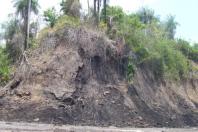BLM proposes to open lands near Vernal for tar sands development
Wednesday, May 15 2013
VERNAL — Utah is home to an estimated 55 percent of the country's tar sands deposits that are concentrated in eight major areas suspected to hold more than 32 billion barrels of oil, the Department of Energy says.
The Bureau of Land Management is now proposing to make 26,402 tracts of that land at Asphalt Ridge outside of Vernal available for potential development. An environmental analysis has been prepared by the federal agency and is under review until June 13.
Comments may be mailed to the BLM Vernal Field Office, 170 S. 500 East, Vernal, Utah 84078 or emailed to BLM_UT_Vernal_Comments@blm.gov.
A Canadian company MCW Energy, has already conducted test drilling at Asphalt Ridge under permits it obtained last year and hopes to expand its operation.
The tracts of land proposed for leasing are directly south of an existing tar sands strip mine and processing plant located on private land and adjacent to more than 16,000 acres of existing leases issued by the Utah School and Institutional Trust Lands Administration.
In its details of the project, the BLM noted that there had been a 2009 lawsuit filed against the agency over its decision to lease acreage for four oil and tar sands projects. A settlement agreement reached two years ago specifically allowed the Asphalt Ridge project to be leased. Obtaining the leases does not mean any tar sands mining will take place because a separate review will be required in the federal permitting process.
In the case of MCW Energy, the company already hired Cedar City-based environmental consultants to conduct an analysis of impacts and its test site that include protection of water and air resources.
Winter-time ozone is a problem that plagues that Uintah Basin and isn't uncommon in other oil and gas producing regions such as areas of Wyoming. The BLM said it will require pollution controls be instituted once the successful bidding company submits its site specific development plans.
Other impacts that would have to be addressed include possible disturbance of golden eagle nesting sites and sage grouse populations, including one active breeding site called a lek.
The project will be developed in two stages, the first of which is a 540-acre strip mine and then an underground mine once those resources are exhausted.
In April, the U.S. Department of Energy announced that a project it funded resulted in the development of new technology by a Salt Lake City company, Ceramatec, that should make processing costs more economically feasible.
The technology, the agency said, has the potential to unlock the vast tar sands deposits in the Green River Formation.
The U.S Department of Energy said there are nearly a billion barrels of oil contained at Asphalt Ridge.
Paul Davey, a spokesman with MCW Enterprises, said the company anticipates being able to start production near the end of July, with a modest startup target of 250 barrels of oil a day.
He said an attractive component of MCW's extraction techniques is that they don't require the use of water — which has given rise to concern and criticism by opponents, especially in the arid West.
"It's an evironmentally conscious method. We don't use water like other companies that are drilling deep in the aquifers and churning up all kinds of unhappiness," Davey said.
http://www.deseretnews.com/article/865580071/Company-seeks-to-tap-Utahs-...


